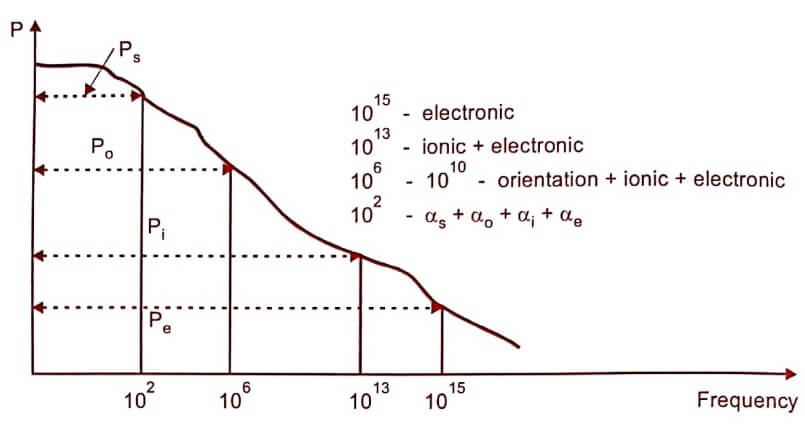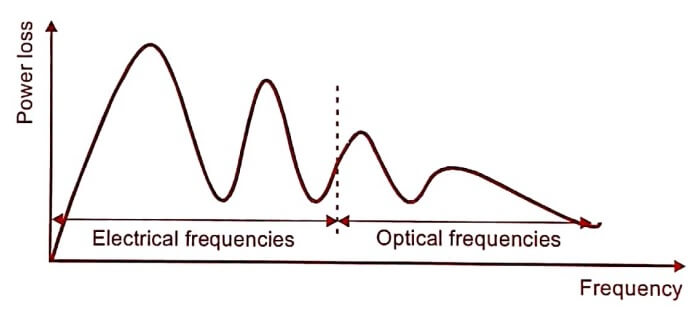Frequency dependence
where Pm is the maximum polarization attained due to applied field and tr is the relaxation time.
Relaxation Time ( tr )
It is the time taken for a polarization process to reach 0.63 of the maximum value.
EXPLANATION
Electronic polarization is very fast and is completed at any instant of time even when the frequency of the voltage is very high in the optical range (1015 Hz). Thus it occurs at all frequencies
Ionic Polarization is slower and the ions do not respond when the voltage corresponds to visible optical frequencies. i.e, the electric field changes in polarity at very fast, so that the ions are not able to reorient themselves due to the field. So the ionic polarization does not occur at visible optical frequencies. It occurs only at frequencies less than 1013 Hz.
Space-charge polarization is the slowest process because the ions have to diffuse (jump) over several inter atomic distances. This occurs at very low frequencies of 50-60 Hz-(power frequencies).
Thus at low frequencies all the four polarizations will occur and the total polarization is very high, but at high frequencies, the value of the total polarization is very small. The following graphs show that the frequency dependence on the polarization mechanism and the corresponding power losses at those frequencies.

Fig 1.1

Fig 1.2
Temperature dependence
Electronic and ionic polarizations are independent of temperature and the orientation and space charge polarizations are dependent of temperature. Orientation polarization is inversely proportional to the temperature.
Orientation polarization decreases when temperature increases. Because the random nature decreases the tendency of permanent dipoles to align along the field direction. Thus the dielectric constant decreases.
Space charge polarization is directly proportional to the temperature. The space charge polarization increases with increase in temperature. It is because of the fact that the thermal energy helps to overcome the activation barrier and easily the ions diffuse. This results in increase of dielectric constant.
| Read More Topics |
| Ferroelectricity and applications |
| Introduction to superconductivity |
| Magnetic recording materials |





